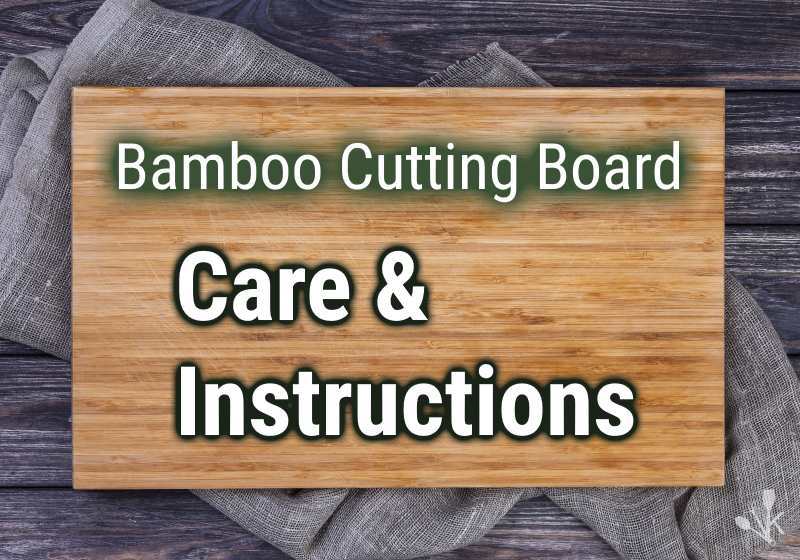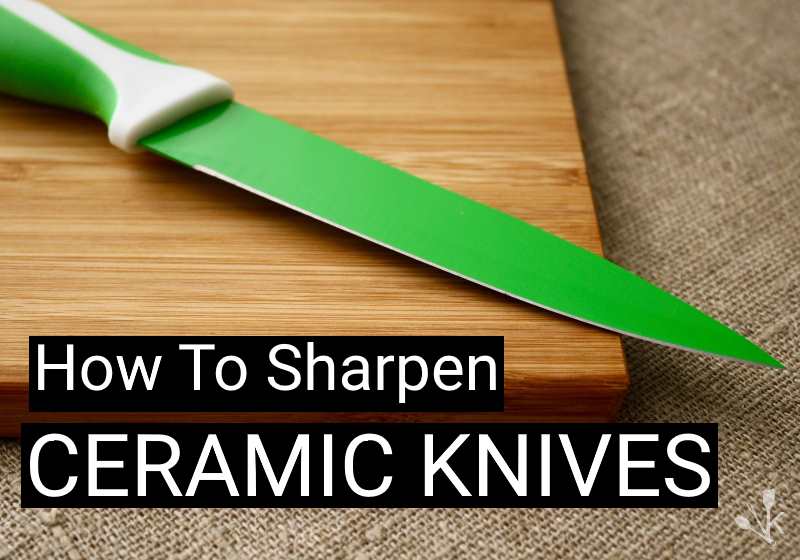Wooden cutting boards have long been a staple of kitchens, but the surge in bamboo as a sustainable wood product means that these are quickly becoming the best cutting boards for everything other than meat.
Water, heat, detergents and time can ruin your bamboo cutting board.

To make sure that your board lasts for many years and doesn’t dry out, splinter, crack or warp due to overexposure to water, consider the following steps and instructions to protect and care for your board.
How To Treat A New Bamboo Cutting Board
First of all, congratulations on your new cutting board! Before you can use it, you’ll need to start the seasoning or sealing process. You’ll need food safe mineral oil and a clean cloth to start.
Avoid getting your new board wet, particularly if it’s unsealed. Coat the board with a food-safe grade of mineral oil. Don’t use a nut-based oil as this can trigger an allergic response to the food you prepare on your board.
Some users have concerns about mineral oil and would prefer to use a produce-based oil.
It’s important to note that many produce-based oils, such as coconut oil, tree nuts or even olive oil, can grow rancid over time.
Food grade mineral oil is not only an excellent sealant for your bamboo cutting board, but it will help you avoid a spoiled layer of oil on your board that will impact the food you prepare and creates an unpleasant odor in your home.
You’ll want to condition your bamboo cutting board once a month to keep it from drying out and splitting or warping.
How To Clean A Bamboo Cutting Board
Bamboo is a long-fibered plant material that will absorb water very efficiently. Never soak your bamboo cutting board or place it in the dishwasher.
In very wet conditions, your board may warp, twist, and splinter.
Instead, wash the board with a mix of mild soap and water. If possible, avoid using a degreasing soap, as this will strip away the conditioning moisture you applied when you oiled the board. Castile soap is very gentle and will clean your board effectively.
It’s always a good idea to use two different cutting boards in your kitchen if you handle or prepare raw meat.
The cleaning requirements for a board that comes into contact with raw meat such as using bleach or intensely hot water will damage your bamboo board.
Instead, consider a silicon board for any food that will require an intense cleaning.
Not only can you easily put this in the dishwasher for sanitation’s sake, and you can get these boards in a variety of colors to make it easier to remind all the cooks in the house which board is good for meat and which isn’t.
How To Sanitize Wood Cutting Boards
As stated above, it’s best not to expose your board to the dangers of raw meat.
However, for general antibiotic cleaning, you can use a mild vinegar solution to disinfect your board.
Mix 1 part which vinegar with one part water and rub it over the surface of the board to kill bacteria. You can easily mix this in a spray container and have it handy whenever you are done cooking.
Experts recommend a 3% hydrogen peroxide solution as a disinfectant for your cutting board.
Unfortunately, this is not something you can store in a spray bottle but will need to pour directly on the board and wipe away. Be ready to re-oil your board once the bamboo is completely dry.
How To Remove Stains From Bamboo
It’s surprisingly easy to stain your bamboo cutting board with produce such as beets or berries. Also, an acid such as that found in citrus fruits or tomatoes can discolor the oiled finish of your board.
Experts recommend a basic set of cleaning products including salt, water, toothbrush, and bamboo cutting board oil.
- Dampen the surface of the board with plain water
- Coat the stained area with salt and let it sit overnight
- The salt may draw out the staining juices of the product you were cutting
- If not, mix kosher salt and water to create an abrasive paste
- Using a toothbrush, scrub the stain with this paste
- After each salt treatment, wash the board with mild soap and warm water
- If the stain remains, buff it out with a fine sandpaper
- Immediately re-oil the board
It’s also important to note that your board will probably darken over time. Berry stains will have to go, but be aware that as you use your board, the finish may turn from a light blonde wood into a deeper brown.
How To Season A Bamboo Cutting Board
As with cast iron, seasoning your cutting board takes time and can be easily undone by careless handling. One trip through the dishwasher can cause your bamboo cutting board a lot of damage.
If possible, get into a regular oiling routine with the board. Coat it with food-safe mineral oil once a month. Set the board flat so the oil will soak into your working surface.

While applying the oil, study the board for signs of warping or splitting. Knife marks are normal and may even be welcome as a reminder of the fun of cooking on your board.
However, if you notice a hollowing or bowl shape on the board, you’ll want to change your storage choices so it can lay flat.
Don’t attempt to flatten the board with weight if you notice any warping. The fibers bent slowly into a warped state and will return slowly to a flat condition. Keep the board oiled, so it doesn’t splinter and give it time.
Bamboo Cutting Board Oil
Using mineral oil may seem a poor decision in a healthy kitchen. However, food grade mineral producers have to jump through some hoops to be able to sell their food safe oils and greases.
It should also be noted that food grade mineral oil has been around for quite a long time and has been used for generations as a laxative.
Look for a product that features USP (United States Pharmacopeia) for an edible grade of food grade oil.
Finally, this oil is extremely stable and won’t spoil over time like a nut or grain-based oil.
While using a biodegradable oil may sound like a healthier option, remember that the process of bio-degrading can be quite unpleasant. Nut oils, olive oils and the like can spoil over time.
Storage Tips
Bamboo is a long-fiber plant product. If you stand up your cutting board long term, it may flex or warm. Whenever possible, lay it flat in a cupboard or drawer so you can access it easily and put it to good use.
Avoid storing it near the stove as heat can cause it to dry out. This will become particularly obvious if the board is exposed to heat and seldom moved; one edge may splinter or dry out and warp.
Finally, don’t leave your bamboo cutting board at the bottom of the stack in the cupboard.
Unfortunately, out of sight is out of mind in this instance. It may get forgotten, dry out and crack under the weight of whatever you’ve got piled on top of it. Keep it hand and put it to work!
Final Thoughts
As the world of kitchen goods grows more and more dishwasher and microwave-safe products, a new tradition of simpler products such as bamboo cutting boards is expanding.
Don’t leave young cooks alone to clean up if your bamboo board has been put to use because it may go into the dishwasher to meet a tragic end.
Keep the bamboo cutting board stored in a flat space, and try not to overcrowd it so air can move in its vicinity. Finally, keep it available so you can put it to use any time you’re preparing produce!











